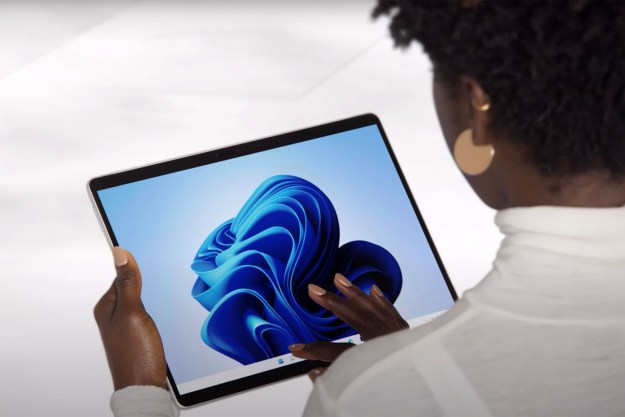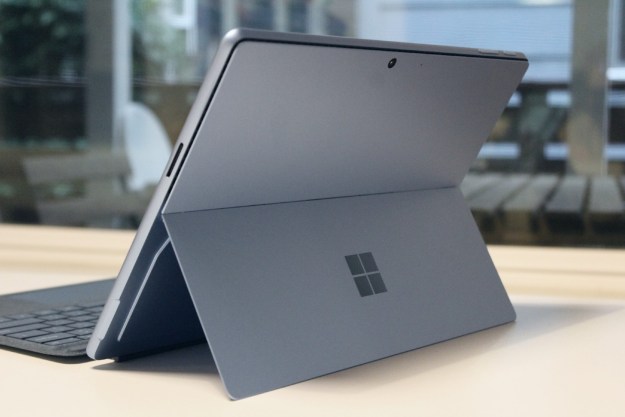
“The Surface Pro 9 ditches its headphone jack, but keeps the fundamentals solid.”
- New colors look great
- Design and build quality are top notch
- SQ3 is a solid alternative
- Type Cover keyboard is excellent
- High resolution webcam
- No headphone jack
- Upgrades still too expensive
- Limited performance improvements
Microsoft really wants Windows on ARM to succeed. For tech heads and early adopters, that’s the real story behind the latest Surface Pro 9.
But regardless of the configuration you choose, the
Specs and configurations
| Microsoft Surface Pro 9 (SQ3) | Microsoft Surface Pro 9 (Intel) | |
| Dimensions | 11.3 x 8.2 x 0.37 inches | 11.3 x 8.2 x 0.37 inches |
| Weight | 1.95 pounds | 1.94 pounds |
| Processor | Microsoft SQ3 | Intel Core i5-1245U
Intel Core i7-1255U |
| Graphics | Adreno 8cx Gen 3 | Intel Xe Graphics |
| RAM | 8GB or 16GB LPDDR4x | 8GB or 16GB LPDDR4x |
| Display | 13-inch PixelSense 120Hz Flow Display (2880 x 1920) | 13-inch PixelSense 120Hz Flow Display (2880 x 1920) |
| Storage | 128GB, 256GB, or 512GB PCIe SSD | 128GB, 256GB, 512GB, 1TB PCIe SSD |
| Touch | Yes | Yes |
| Ports | 2 x USB-C4 with Thunderbolt 4 1 x Surface Connect port 1 x Surface Keyboard port 1 x nano SIM |
2 x USB-C4 with Thunderbolt 4 1 x Surface Connect port 1 x Surface Keyboard port |
| Wireless | 5G, Wi-Fi 6E, and Bluetooth 5.1 | Wi-Fi 6E and Bluetooth 5.1 |
| Webcam | 1080p front-facing camera with IR, 10MP rear-facing | 1080p front-facing camera with IR, 10MP rear-facing |
| Operating system | Windows 11 | Windows 11 |
| Battery | 47.7 watt-hour | 47.7 watt-hour |
| Price | Starts at $1,300 | Starts at $999 |
My review unit came with the Core i7-1255U, 16GB of RAM, and a 512GB SSD, which equals out to $1,900. As per usual, Microsoft charges a lot for upgrades to memory and storage. It’s $300 to go from 256GB to 512GB, or to go from 16GB to 32GB. Dell only charges $100 for these same upgrades in its XPS 13 line by comparison. Heck, that’s even $100 more than what Apple charges on its MacBook Airs.
The one piece of good news on configurations? Microsoft doesn’t charge more for the different color options. They are limited to the higher-end configurations though. The base Core i5 model is only available in Platinum, as are all the configurations of the SQ3.
Hello colors, goodbye headphone jack
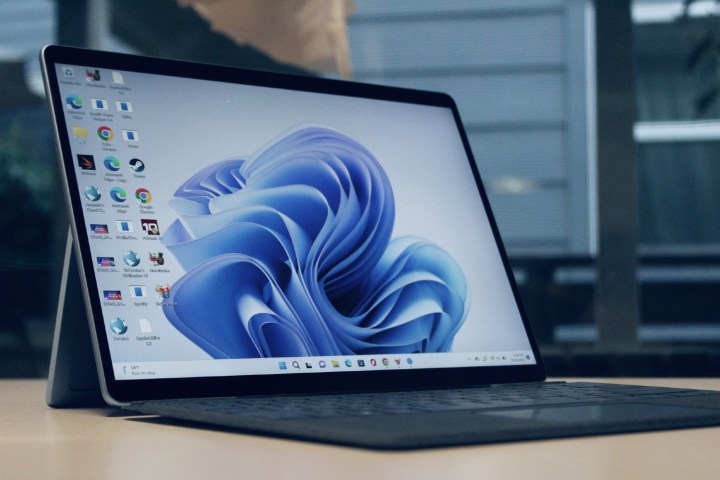
The
It’s still not as thin or light as an iPad Pro, and may never be. But at 1.94 pounds and 0.37 inches thick, it’s among the most compact form factors you can get the full
The Sapphire option is subtle enough to not feel kitschy.
I still wish Microsoft would bundle these in, but the company still sells the
None of that is new. The colors are, though. Microsoft used to only offer flashier colors in the keyboards, but now you have more options to customize the chassis itself. My unit came in Sapphire, but there’s also a Forest green option as well. These new color options are subtle enough to add a splash of interest to the design without feeling kitschy. I’m down.

The ports are really the only other noticeable change to the Surface Pro’s exterior chassis, and this time around, it’s not good news.
Still, the lack of a headphone jack in the case will only turn people off. There’s no explanation given by Microsoft for the change, and no discernible reason this had to happen this year. If we’d seen a dramatic reduction in thickness, that’d be one thing. But it really feels like Microsoft cut the headphone jack from the
Performance
My review unit came with the Intel Core i7-1255U, which performed as expected in this device. These U-series chips aren’t Intel’s heavy hitters, in fact, they only have two Performance cores. But for a device of this type, you’ll find this chip to provide plenty of performance, especially if you’re sticking primarily to applications like web browsers, video calls, Office applications, and light photo editing. If you still assume a tablet like this can’t fully replace your laptop, think again.
| Geekbench (single / multi) |
Handbrake (seconds) |
Cinebench R23 (single / multi) |
PCMark 10 Complete |
|
| Surface Pro 9 (Core i7-1255U) |
1170 / 6518 | 166 | 1124 / 7537 | 4045 |
| Dell XPS 13 9315 (Core i5-1230U) |
1393 / 4,459 | 333 | 1379 / 3457 | 4023 |
| Surface Laptop 5 (Core i7-1255U) | 1209 / 6391 | 139 | 1130 / 7170 | 4198 |
| Asus ZenBook S 13 UM4302 (Ryzen 7 6800U) | 1417 / 6854 | 112 | 1402 / 8682 | 5647 |
| Surface Pro 8 (Core i7-1185G7) | 1296 / 5041 | 185 | 1287 / 5431 | 4169 |
| HP Spectre x360 13.5 (Core i7-1255U) |
1,566 / 7,314 | 169 | 1,623 / 5,823 | 5203 |
This isn’t a clean step up from 11th-gen to 12th-gen though. As you can see, single-core performance is down year-over-year. That’s true in both Geekbench 5 and Cinebench R23 — but also shown in the Essentials test in PCMark 10, which tests single-threaded tasks like web browsing, video conferencing, and app start-up time. The
Fortunately, the benefit of Intel’s 12th-gen chips is the extra Efficiency cores — eight in this case. The result is significantly better multi-core performance — up to 28% in Cinebench R23. As a generalization, this means faster performance in applications like the Adobe Creative Suite or Handbrake. But people likely aren’t buying a tablet primarily for those applications, and most of the other
The
Battery life
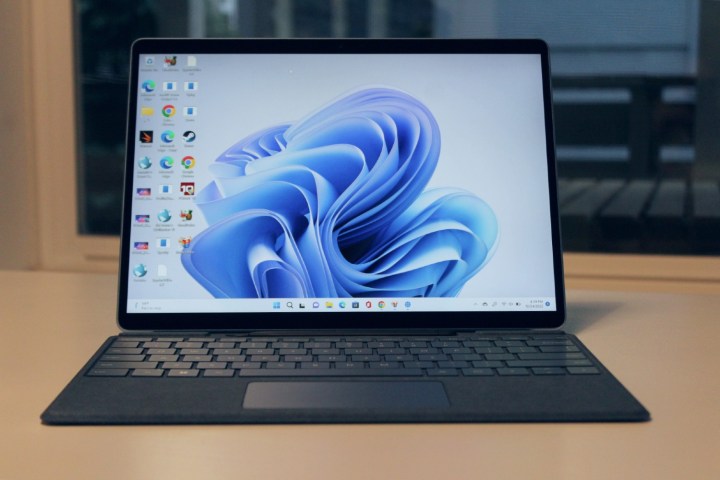
Like performance, the generational jump from Surface Pro 8 to
Again, the SQ3 model should even that out a bit, though I can’t say for sure just yet by how much.
Compared to other thin and light Windows
Choosing between Intel and SQ3
With the two options of Intel and SQ3 side by side, your assumptions about the strengths and weaknesses of these chips probably hold true. The Intel 12th-gen chips are faster, while the ARM-based SQ3 has better battery life. Microsoft admits this itself in its own spec sheets, claiming the SQ3 offers up to four more hours on a single charge — despite using the same 47.7-watt-hour battery.
Why the difference? Well, the SQ3 is the result of Microsoft’s latest collaboration with Qualcomm, built on the Snapdragon 8cx Gen 3. That means it’s a customized chip built for the
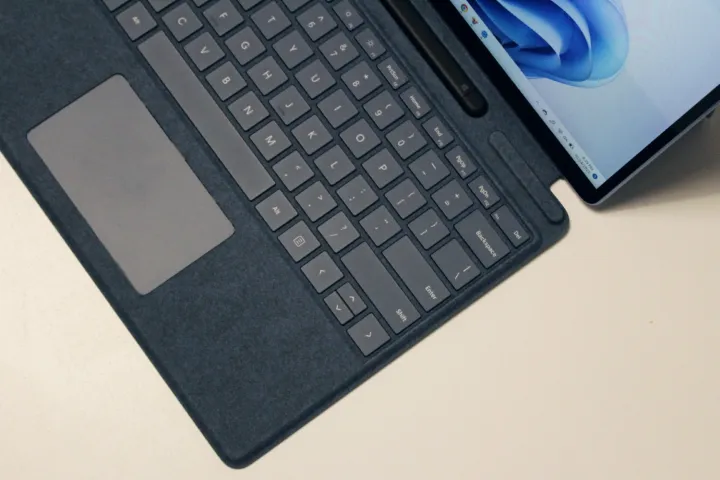
The SQ3, though, isn’t quite that. At least, not yet. Having not tested the chip yet myself, I can’t say for sure, of course. But I’m going to keep my expectations mild. We’ve seen what the 8cx Gen 3 is capable of in the ThinkPad X13s, and while it was certainly the most capable Snapdragon PC chip to come out yet, it’s behind the current generation of Intel processors in single-core performance by as much as 37%. Even compared to the slower Dell XPS 13 (9315), it’s over 20% behind in single-core – more akin to
I expect the SQ3 to improve that performance by a bit, but to land somewhere in the same ballpark. And yes, that means it’ll also likely be slower than last year’s Intel-based Surface Pro 8.
The SQ3 supposedly improves the battery life of the
Despite that fact, Microsoft is charging $300 extra for the SQ3 model over the base Intel configuration. Considering you’re getting less performance, that extra money might sound hard to justify. Fortunately, there’s more to a chip than just performance, and the SQ3 gives you two major advantages over the Intel model. First, you get
Then, there’s battery life. The SQ3 supposedly improves the battery life of the
App compatibility
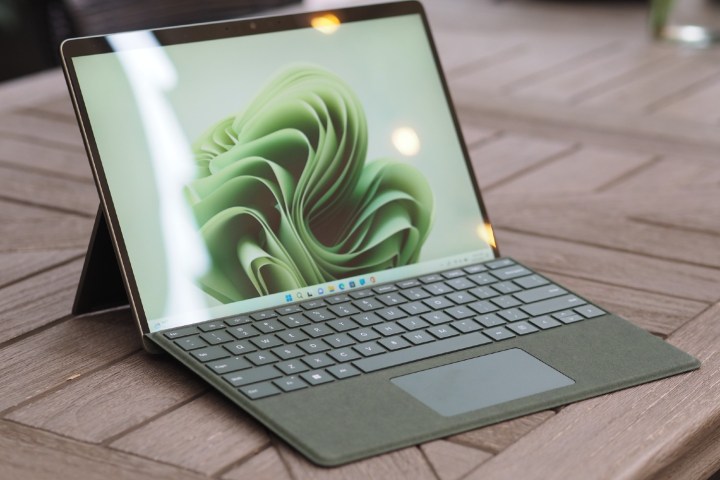
Aside from raw performance, app compatibility has long been the biggest hurdle for Windows on ARM devices. Famously, when the Surface Pro X first launched, many apps weren’t optimized for the ARM architecture, resulting in awful emulated performance in basic applications like Google Chrome – or even worse, apps that wouldn’t run at all.
The situation since then has improved significantly. Most of the apps you’d expect to have available run just fine, including both legacy 32-bit apps and newer 64-bit ones. Many of Microsoft’s own apps have been recompiled for ARM, such as the Edge web browser or Microsoft Teams. There’s still work to be done in terms of convincing more third-party developers to get on board, but the emulation has improved significantly.
Once I get my hands on an SQ3 model myself, I’ll be sure to put it to the test, but there’s a lot we can assume from other recent Windows on ARM devices.
It goes without saying, but the
The Surface Pro 9 is at a crossroads
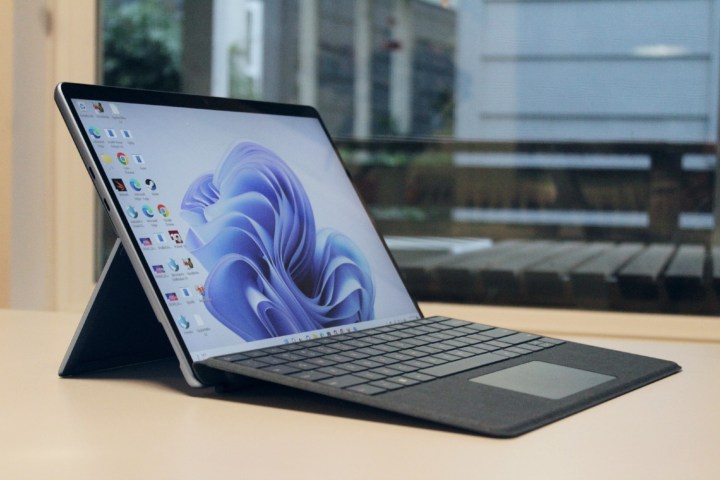
The
And yet, there are things that I wish were different about the
And as always, you really have to be sold on the premise of the 2-in-1 to make the price worth it.
I still think the iPad Pro takes better advantage of its form factor, providing a far more focused touch experience.
That said, the
Editors' Recommendations
- Best Microsoft Surface Laptop and Surface Pro deals — from $600
- Microsoft Surface Pro 9 vs. Lenovo IdeaPad Duet 5i: which 2-in-1 is best?
- The Surface Pro 9 embraces ARM chips and a splash of fresh color
- Microsoft is finally refreshing the Surface Studio 2 (four years later)
- Microsoft Surface October Event: Surface Pro 9 and everything else we expect


